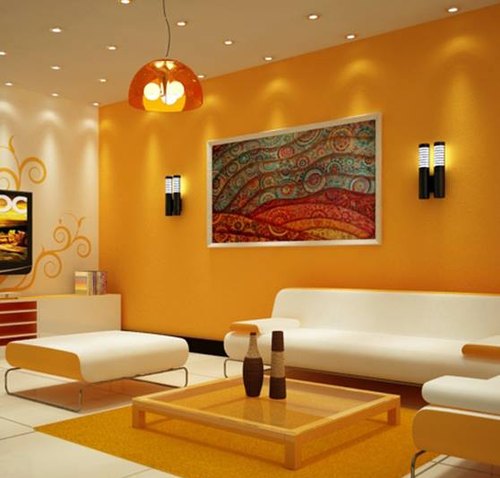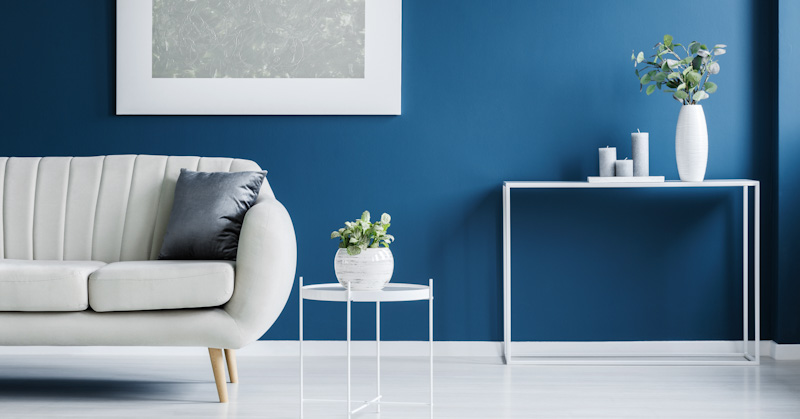Trusted Cleveland Metro Painting Specialists for Reliable Home and Office Painting
Trusted Cleveland Metro Painting Specialists for Reliable Home and Office Painting
Blog Article
Enhance Your Inside Design With Comprehensive Color Appointment
The combination of shade consultation into indoor design offers a special possibility to improve and boost the visual and emotional resonance of a space. By involving with an experienced shade consultant, you can navigate the complexities of shade selection, making certain that your options not only complement building functions however likewise reverberate with individual design and mental impact.
Advantages of Color Consultation

Additionally, shade assessment help in making the most of all-natural light and maximizing spatial perception. Lighter tones can make a space appear even more expansive, while darker shades produce an intimate setting. Cleveland Metro Painting Specialists. This strategic application of shade can considerably affect the total atmosphere of any kind of indoor room
Additionally, professional consultants possess an extensive understanding of present patterns and ageless classics, guaranteeing that the chosen colors will continue to be enticing with time. This insight can conserve customers from expensive redesigns in the future. Lastly, color assessment empowers clients by providing them with a clear vision and instructions, cultivating self-confidence in their style options and ultimately leading to a more satisfying and effective interior decoration outcome.
Recognizing Color Psychology
The significance of shade psychology in indoor layout can not be overstated, as it looks into the emotional and mental impacts that various hues can evoke in people. Shades can affect state of mind, habits, and even performance, making them a vital factor to consider in any kind of layout task.
As an example, cozy shades such as red, orange, and yellow are typically related to power and heat. They can boost feelings of excitement and comfort, making them ideal for social areas like living kitchen areas or spaces. Conversely, trendy colors like blue, eco-friendly, and purple have a tendency to stimulate calmness and harmony, making them perfect for bed rooms or reflection areas.
In addition, the use of neutral tones can produce a well balanced environment by allowing the bolder shades to stand out without overwhelming the senses. Recognizing these psychological impacts allows developers to develop spaces that not only look visually pleasing yet also promote psychological health.
Incorporating color psychology right into interior decoration includes a thoughtful option of tones tailored to the desired function of each room, ultimately improving the total experience for its residents. This understanding is important for achieving a unified and practical interior atmosphere.
The Shade Wheel Described
Understanding the connections in between colors is essential for effective interior style, and the color wheel offers as a useful tool in this procedure. The color wheel, established by Isaac Newton in the 17th century, shows the spectrum of colors prepared in a round format. It makes up primary shades-- red, blue, and yellow-- that can not be created by blending various other shades. Secondary shades, formed by integrating primaries, consist of green, orange, and purple. Tertiary colors result from mixing a key and a second color, resulting in shades such as red-orange and turquoise.
The shade wheel assists developers understand the relationships in between shades, including complementary, analogous, and triadic schemes. Corresponding shades, positioned helpful site contrary each various other on the wheel, produce vibrant contrasts that can invigorate a room. Comparable colors, located beside one an additional, provide a unified and natural appearance. Triadic plans use 3 equally spaced colors, providing balance and aesthetic interest.
Utilizing the shade wheel in indoor design not just enhances visual allure however additionally evokes particular feelings and atmospheres, making it an important referral for shade appointment. Recognizing these connections eventually equips developers to create rooms that are both useful and aesthetically fascinating.
Picking the Right Palette
Usually, selecting the best combination is a crucial factor in achieving a successful interior decoration task. An appropriate color pattern can unify an area, improve its functions, and stimulate wanted feelings. To start, consider the purpose of the room. Different areas offer different features and call for palettes that reflect their designated usage; for example, tranquil shades such as soft blues or greens work well in bedrooms, promoting relaxation.
Light can drastically change how colors appear, so it is essential to analyze the area at various times of the day. A harmonious palette should enhance these attributes, producing a cohesive appearance throughout the space.
When choosing shades, make use of the 60-30-10 regulation, which suggests that 60% of the space need to be a dominant color, 30% an additional shade, and 10% an accent color. This ratio makes certain balance and aesthetic rate of interest (Cleveland Metro Painting Specialists). Example colors on the walls prior to committing, as this enables you to see just how the shades connect with one another and the general setting they develop in your interior style task.
Collaborating With a Color Professional

When working with a color expert, the procedure commonly begins with an initial consultation. During this conference, you'll review your vision, choices, and the existing aspects in your area. The expert will evaluate your needs and may recommend details shade schemes that straighten with your objectives.
After establishing a direction, the consultant will give examples and visual aids to aid you picture the recommended color pattern. This step is important, as colors can appear differently under differing illumination conditions.
Additionally, a shade expert can direct you in selecting complementary home furnishings, art work, and accessories to balance with your picked scheme. By working together very closely, you can accomplish a polished visual that raises your interiors and develops an inviting atmosphere. Ultimately, the proficiency of a color expert can significantly improve the total effect of your layout job.
Conclusion
In summary, thorough shade assessment serves as an essential device for enhancing interior style. By leveraging specialist knowledge click for source of color psychology and spatial dynamics, a customized shade palette can be established to stimulate specific emotions and this article develop a harmonious setting.
By engaging with an experienced shade professional, you can navigate the complexities of shade selection, making sure that your selections not just enhance architectural features however additionally resonate with personal style and mental influence. It comprises primary shades-- red, blue, and yellow-- that can not be developed by blending other colors.The color wheel assists developers comprehend the partnerships in between colors, including complementary, comparable, and triadic plans.When choosing colors, make use of the 60-30-10 regulation, which recommends that 60% of the room should be a dominant shade, 30% a second shade, and 10% an accent shade. By leveraging expert knowledge of color psychology and spatial characteristics, a customized shade scheme can be developed to stimulate details feelings and produce a harmonious setting.
Report this page